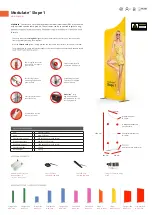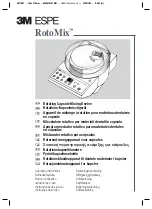
16
7
General description
The VTR6 current controller provides repeatable intensity and timing control
for strobe lighting. Two modes of operation are provided for the light output:
Pulse (strobe)
In pulse mode the output is pulsed once per trigger. The delay from trigger to
pulse, the pulse duration and the brightness can be set.
Switched
In switched mode the trigger input can be used to switch the output current on
and off.
The setup is non-volatile, so the VTR6 resumes the same operation after a power cycle.
7.1
Pulse and duty cycle limits
In both pulsed and switched modes, the pulse width and duty cycle are internally
limited to prevent damage to the light.
The brightness can be set up to 100%, but only for short periods and at low
duty cycles, so that the lighting does not overheat and get damaged. In pulse
mode, the duty cycle is limited by ignoring triggers which are too soon after the
previous trigger.
Output
brightness
Allowed
pulse
width
for
850nm
lights
Allowed
duty cycle
for 850nm
lights
Allowed
pulse
width for
white
lights
Allowed
duty cycle
for white
lights
0 to 20%
3ms
6%
3ms
3%
21% to 30%
3ms
6%
2ms
3%
31% to 50%
3ms
3%
2ms
2%
51% to
100%
1ms
2%
1ms
2%
So, for example, if the brightness is set to 40%, then a VTR6-850 does not allow
pulses greater than 3ms long. With 1ms pulses, if a trigger occurs within 33ms
of a previous trigger (so that the duty cycle would be greater than 3%) the trigger
is ignored.
If necessary, the VTR6 limits the duty cycle by increasing the retrigger delay.
When the VTR6 internal temperature gets too high, the allowed duty cycle is
reduced and event 149 is generated. This typically happens at 50°C.
Содержание PULSESTAR VTR6
Страница 1: ...PULSESTAR VTR6 Installation Guide Issue 005...
Страница 2: ...For your notes...
Страница 36: ...32...
















































